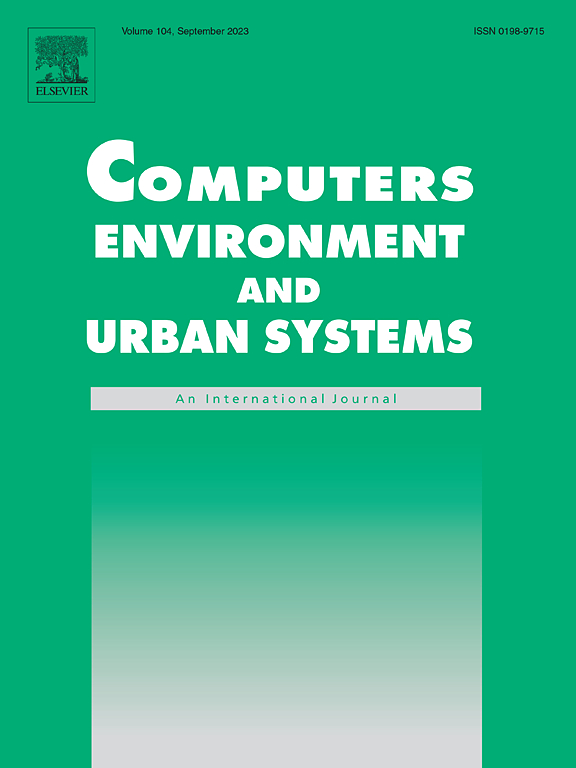Estimating the density of urban trees in 1890s Leeds and Edinburgh using object detection on historical maps
IF 8.3
1区 地球科学
Q1 ENVIRONMENTAL STUDIES
Computers Environment and Urban Systems
Pub Date : 2024-11-16
DOI:10.1016/j.compenvurbsys.2024.102219
引用次数: 0
Abstract
We present a new end-to-end methodology for extracting symbols from historical maps and demonstrate an application of the method to extract details of the urban forests of Leeds and Edinburgh in the UK using Ordnance Survey maps from the 1890s. The methods presented allow tree symbols on 1:500 scale maps to be efficiently extracted, with our object detection model achieving an F1-score of 0.945. The results for each city are presented on the National Library of Scotland website and have been used to generate an estimate of 37 ± 1 tree symbols per hectare for Leeds in 1888–90 and 40 ± 1 tree symbols per hectare for Edinburgh in 1893–94. This is the first time that quantitative data has been obtained for historical urban tree counts in these two cities. The method presented can be expanded to other UK towns and cities and is a valuable tool for learning about the past, and changes to both the natural and built environment over time, aiding decisions on future tree planting. We discuss the process used to automate the generation of training data and to train a machine learning model to extract the symbols, comparing it with other possible models. This discussion provides context on how best to tackle similar problems of symbol extraction from historical maps and the issues that may arise in such automated analysis, alongside factors that must be considered when using historical maps as a data source.
利用历史地图上的目标检测估算 1890 年代利兹和爱丁堡的城市树木密度
我们介绍了一种从历史地图中提取符号的端到端新方法,并演示了该方法在英国利兹和爱丁堡城市森林细节提取中的应用,该应用使用的是 1890 年代的英国地形测量局地图。所介绍的方法可以有效提取 1:500 比例尺地图上的树木符号,我们的对象检测模型的 F1 分数达到了 0.945。苏格兰国家图书馆网站介绍了每个城市的结果,并利用这些结果估算出 1888-90 年利兹每公顷有 37 ± 1 个树木符号,1893-94 年爱丁堡每公顷有 40 ± 1 个树木符号。这是首次获得这两个城市历史上城市树木数量的定量数据。所介绍的方法可推广到英国其他城镇,是了解过去以及自然环境和建筑环境随时间推移而发生的变化的重要工具,有助于未来植树造林的决策。我们讨论了自动生成训练数据和训练机器学习模型以提取符号的过程,并将其与其他可能的模型进行了比较。这一讨论提供了如何以最佳方式解决从历史地图中提取符号的类似问题的背景,以及在此类自动分析中可能出现的问题,还有在使用历史地图作为数据源时必须考虑的因素。
本文章由计算机程序翻译,如有差异,请以英文原文为准。
求助全文
约1分钟内获得全文
求助全文
来源期刊

Computers Environment and Urban Systems
Multiple-
CiteScore
13.30
自引率
7.40%
发文量
111
审稿时长
32 days
期刊介绍:
Computers, Environment and Urban Systemsis an interdisciplinary journal publishing cutting-edge and innovative computer-based research on environmental and urban systems, that privileges the geospatial perspective. The journal welcomes original high quality scholarship of a theoretical, applied or technological nature, and provides a stimulating presentation of perspectives, research developments, overviews of important new technologies and uses of major computational, information-based, and visualization innovations. Applied and theoretical contributions demonstrate the scope of computer-based analysis fostering a better understanding of environmental and urban systems, their spatial scope and their dynamics.
 求助内容:
求助内容: 应助结果提醒方式:
应助结果提醒方式:


